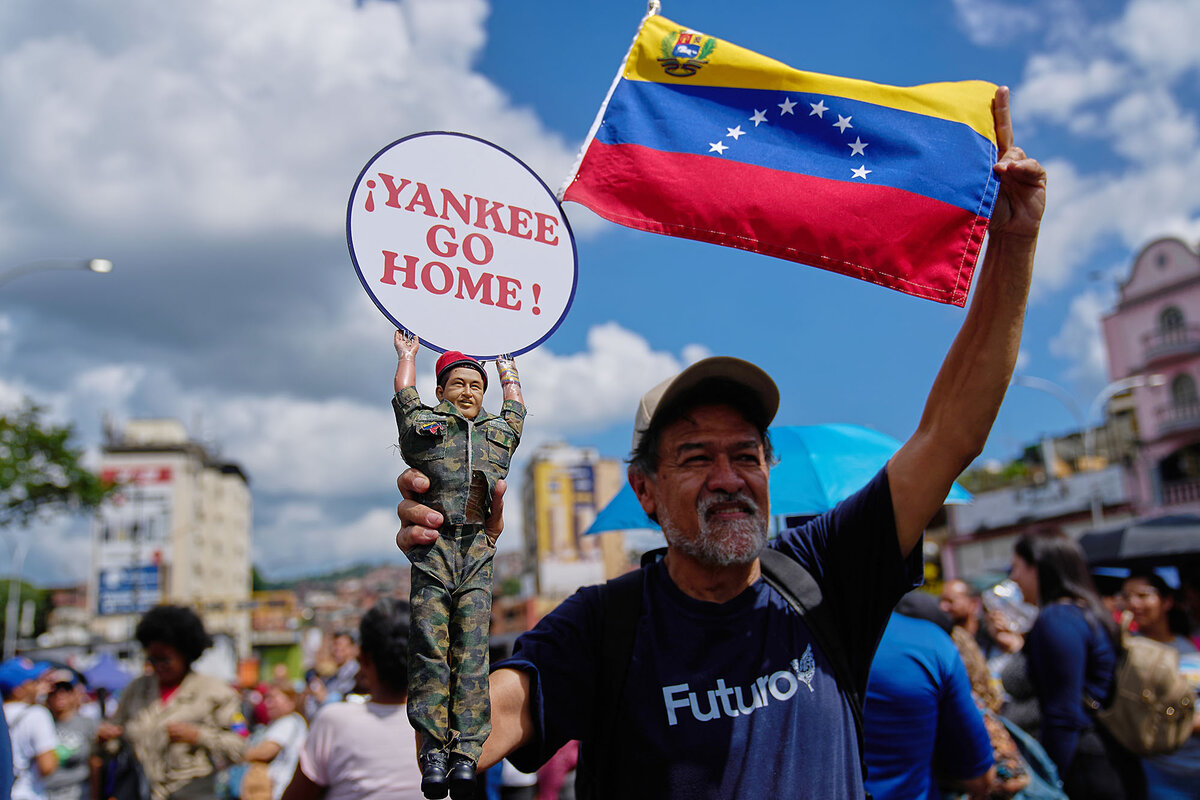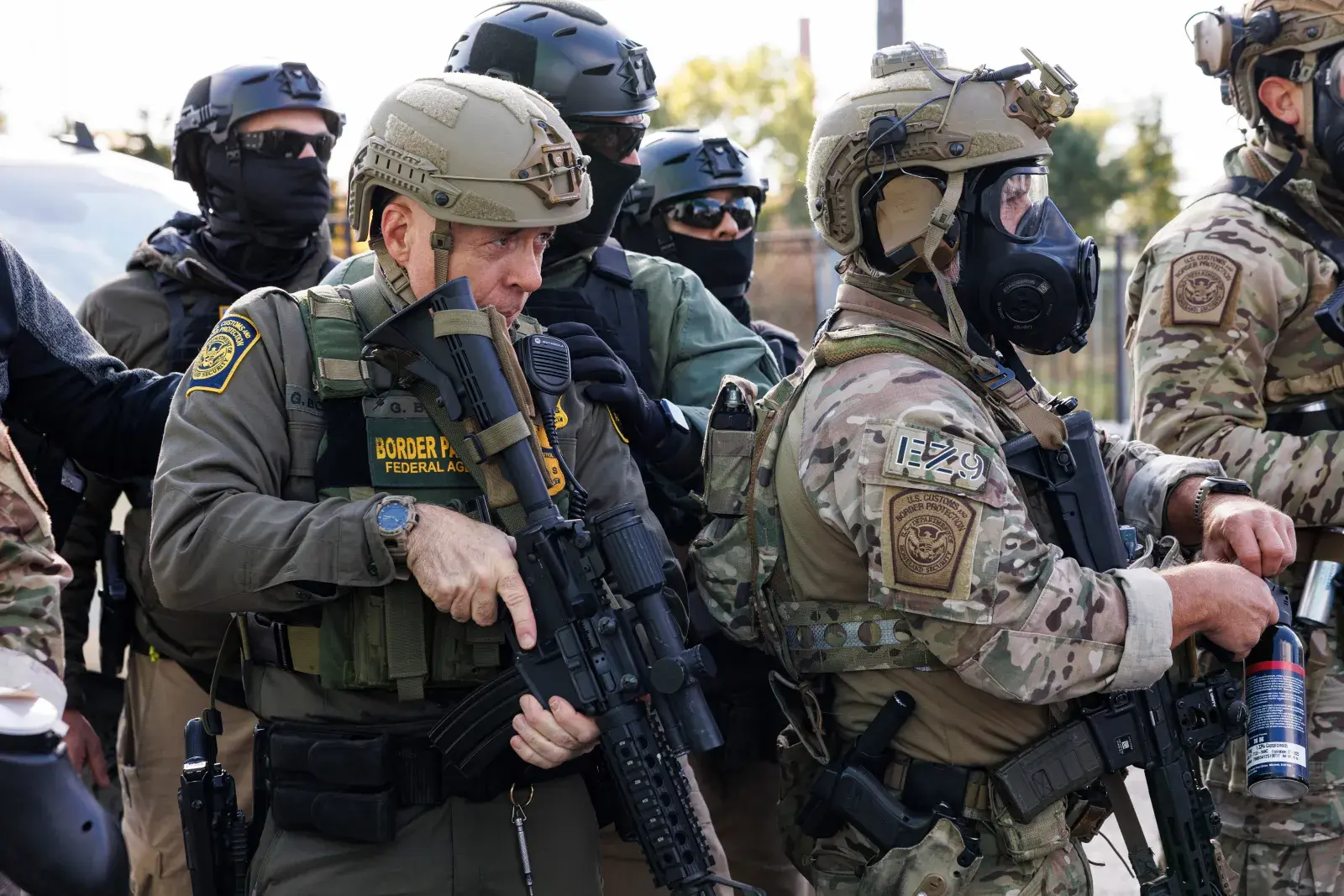Copyright csmonitor

The Navy’s most advanced aircraft carrier, the USS Gerald R. Ford, and its battle group of warships is on its way to the Caribbean in a striking escalation of U.S. military force in the region. The Trump administration has said that its arrival in the coming days will help disrupt narcotics trafficking. So, too, it argues, will U.S. strikes on some 14 vessels in the Caribbean Sea and Pacific Ocean, resulting in at least 57 deaths and raising legal questions about the fate of service members ordered to carry out what some argue are extrajudicial killings. The administration has said the strikes are justified because the nation is in armed conflict with drug cartels. Others see the rumblings of regime change with the aim of ousting Venezuelan President Nicolás Maduro, whom the White House calls an illegitimate leader. In fact, aircraft carriers are not particularly well-suited for drug interdiction. But they are highly proficient at carrying out airstrikes and as a jumping-off point for troops, vehicles, and supplies bound for hostile shores. Mr. Maduro probably gets the gist: Venezuelan troops have begun large-scale defense drills. Mr. Maduro has also announced the mobilization of 4.5 million militia members, although experts question that Mr. Maduro has a civilian armed force of this magnitude. The question is whether, as the White House envisions it, this will involve U.S. military strikes or is simply muscle flexing to strong-arm Mr. Maduro into stepping down. Since the United States began exerting military pressure on Venezuela, a Russian transport aircraft linked to the country’s military and the former Wagner Group, a Russian state-funded private military company, has landed in the country. Mr. Maduro is also stepping up repression at home even as the economic situation there continues to worsen, with inflation set to approach 270% by the end of 2025, according to an estimate from the International Monetary Fund. A hairdresser in Caracas, who requested anonymity for fear of persecution, has watched her two sons flee the country, leaving her there alone. She closed her beauty salon because her customers “don’t have any money. Everything is very expensive, so people have other priorities” than dyeing their hair, she says. Still, she attends Catholic mass and holds out hope that her country could be “closer than ever” to democratic change. Regime change challenges There has been speculation about whether, in its military posture toward Venezuela, the Trump administration is seeking negotiation or is escalating toward confrontation. Many analysts began leaning toward the latter view after the White House rejected Mr. Maduro’s offer of “fairly heavy concessions to the U.S. in terms of handing over chunks of their oil industry,” says Ben Friedman, the policy director at Defense Priorities, a Washington think tank. “The Trump administration told them to take a hike.” Since then, U.S. forces have been seen training off the coast of Trinidad and Tobago, a twin-island nation near Venezuela. A guided-missile destroyer, the USS Gravely, also arrived for a port visit. U.S. Special Operations Forces, including Army Night Stalkers — the normally secretive 160th Special Operations Aviation Regiment — have been spotted in the area as well. These forces helped spearhead the 1989 U.S. invasion of Panama. The Gerald R. Ford’s arrival will add another 5,000 sailors to the U.S. military contingent, currently consisting of 10,000 U.S. troops, roughly half of whom are on warships. The other half are in Puerto Rico. Still, regime change is no easy feat: It would take a force of at least 50,000 and, by some estimates, as many as 200,000 troops to invade Venezuela successfully. Most analysts say a U.S. ground-war scenario remains unlikely and, in any case, would be very different from the 1989 invasion of Panama. “It would not be quick and easy. It would be prolonged,” says Rebecca Bill Chavez, the president of Inter-American Dialogue. “And there is no appetite in the U.S. for the death of [American] troops on Venezuelan soil.” Venezuela’s size and terrain, which includes urban centers such as Caracas as well as vast stretches of tropical forests, make ground warfare particularly challenging. Troops would also have to battle multiple armed groups whose fate is closely tied to that of Mr. Maduro, including illegal mining groups and “illicit trafficking organizations of all sorts,” Dr. Chavez says. Airstrikes more likely Analysts see U.S. airstrikes as a likelier scenario than a ground invasion. The Gerald R. Ford comes with carrier-based F/A-18 Super Hornets, and Tomahawk cruise missiles have a range of 1,000 miles or more. Offensive strikes by the U.S. would probably be aimed at crippling Venezuelan command-and-control centers and disabling the country’s key air bases. The threat of airstrikes alone could be designed to encourage a military coup led by officers who want to avert a U.S. military intervention. There are hiccups in this plan, however. Any mass protests against the Maduro regime are unlikely, says a human rights lawyer in Caracas, who withheld his name to speak freely. “We know the [government] response would be totally violent and disproportionate.” And Mr. Maduro has proved “adept at using carrots and sticks to keep his military leaders in line,” Dr. Chavez says. In 2016, the Maduro government appointed military generals to oversee the nation’s food production and distribution. Instead of solving the crisis, many profited by selling imported food at inflated prices on the black market. Courtesy of Mr. Maduro, Dr. Chavez says, the military officers have “such control over the economy that they have a great stake in his survival.” Venezuelan opposition leaders would also likely oppose any deal with the Trump administration that grants Mr. Maduro or his military leaders concessions in exchange for their relinquishing power. At the same time, a Venezuelan government born from U.S. military intervention would carry its own risks, including the perception that it would be beholden to the U.S., says Txomin Las Heras Leizaola, a researcher at the Venezuela Observatory at Universidad del Rosario in Bogotá, Colombia. Instead, regime change in Venezuela will depend on the opposition’s ability to remain united and to offer a credible alternative, he adds. There is also the question of control. In the past, strikes “based on some sort of theory that you can empower opposition groups to seize power,” have historically given the U.S. “very little control of what happens,” notes Mr. Friedman of Defense Priorities. “We’ve seen this in countless other circumstances,” he adds. The U.S. intervention in Libya is a prime example. Unrest in Venezuela could also accelerate flows of refugees to surrounding countries, Mr. Friedman adds, and “sooner or later, to the United States.” Pressure campaign tactics For now, B-52 and B-1 bombers continue to skirt the Venezuelan coast in what U.S. Southern Command – which oversees Pentagon operations in Latin America – referred to on social media as a “bomber attack demonstration.” That these flight paths are visible through open-source tracking reinforces the notion of a White House pressure campaign. So, too, does the White House’s $50 million reward for information leading to Mr. Maduro’s arrest. Some of President Donald Trump’s closest supporters have suggested that Mr. Maduro should flee the country. “I’d head to Russia or China right now,” Republican Sen. Rick Scott of Florida advised in an appearance on the CBS program “60 Minutes” on Sunday. “His days are numbered. Something’s going to happen.” There could also be U.S. military strikes designed to discourage drug trafficking in wider Latin America, says Dr. Chavez. The recent strikes on boats in the Pacific can signal to Mexico, Colombia, and other countries in the region that the U.S. is willing to use military force to stop illicit drug flows to the U.S. The forthcoming National Defense Strategy is poised to emphasize the security of the Western Hemisphere and the U.S., suggesting, some analysts say, that the current deployment will become the new normal, like an updated Monroe Doctrine that asserts a U.S. sphere of influence in Latin America. Mr. Friedman says President Trump has proved “uniquely willing to not just use force, but then to stop using force on a dime.” “A high possibility scenario is that the U.S. does some sort of limited strikes in Venezuela,” he adds, “and then just walks away.”



